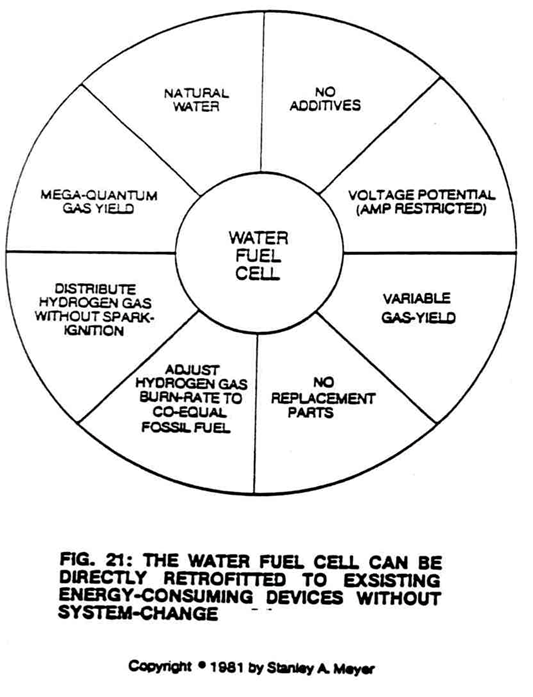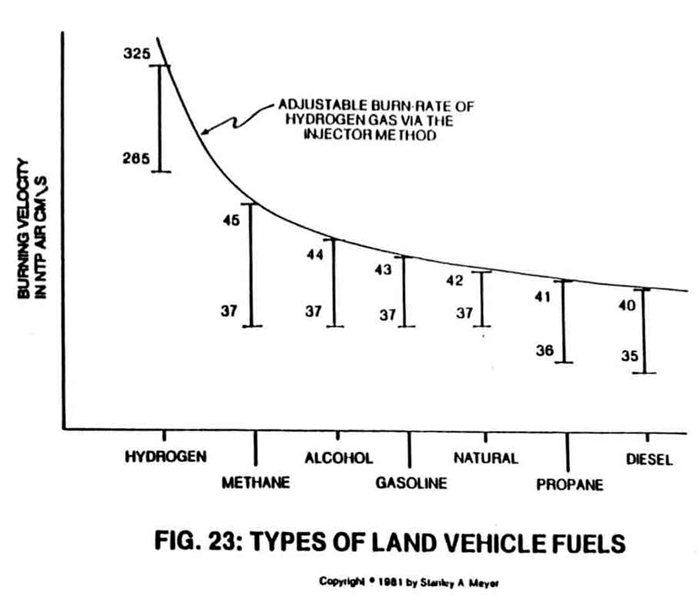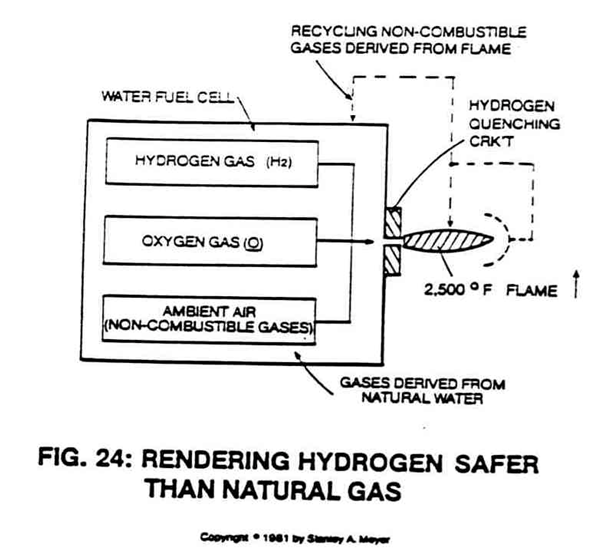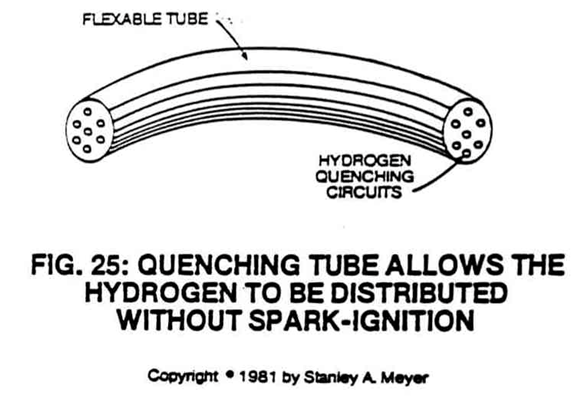Fuel Cell Economics
DESIGN TO RETROFIT:
 Due to the discovery of the electrical charging of the water molecule and the use of voltage zones for splitting water into hydrogen and oxygen, the Fuel Cell is easily adaptable to all types of energy needs.
Due to the discovery of the electrical charging of the water molecule and the use of voltage zones for splitting water into hydrogen and oxygen, the Fuel Cell is easily adaptable to all types of energy needs.
Not only that, but the Water Fuel Cell is a retrofit system that does not require drastic changes in the energy consuming device.
The simple, yet staggering design of the Fuel Cell lends itself to many other advantages over traditional energy sources; see Figure 21.
A PHYSICAL PROCESS:
Since voltage, a potential energy, is used for the electrical polarity zones, the entire process of splitting the water molecule is a physical one.
Amps are restricted in the electrical polarization process, so there is almost no chemical reaction in the environment of the Fuel Cell.
Since chemical interaction is not required during the electrical polarization process, any form of natural water may be used for the extraction of hydrogen as fuel.
Rain water, well water, tap water, river water, reservoir water, snow, distilled water, and even ocean water may be used in the Fuel Cell.
Salt water has no adverse effect upon the Fuel Cell because amps are restricted. Salt and other minerals in the water are contaminants that are simply discarded.
They do not disrupt the normal function of the Fuel Cell. So, how cheap is water?
HYDROGEN: MORE POWERFUL THAN FOSSIL FUELS:
Due to the inherent properties of the Water Fuel Cell, a little energy is being consumed to release a tremendous amount of energy in the form of hydrogen gas in the form of hydrogen for use as fuel.
By atomic weight (NASA test data), hydrogen is two and a half times more powerful than gasoline.
Two thirds of a gallon of water contains hydrogen. So, how powerful is water?
WHAT'S THE COST OF WATER?:
There are no expensive forms of chemical additives that have to be mixed to the water for hydrogen production.
You do not have to process the natural water in any fashion.
WHAT'S THE COST OF VOLTAGE?:
The system is a voltage device, not an amp device.
Voltage is a potential energy, not a consumed energy.
Because of this, there is almost no consumption of power to split the water molecule into its component parts.
The cost of voltage is negligible when amps are restricted.
Simply by varying the voltage to the system, or the physical parameters of the system, production of gas will increase exponentially. But, energy consumption does not increase, even if voltage is increased.
FUEL CELL LONGEVITY:
Since the Fuel Cell is a non-chemical device, the use of non-oxidizing, non-reactive, non-corrosive materials provides for a system that has an extremely long life (lab tested .0001/yr) and does not need replacement parts.
The system will not self destruct during gas Production.
FUEL CELL MEETS THE NEED:
Because of its operational properties, the Fuel Cell may take on any form or size.
The flexibility of design allows for use in any application.
The pulse voltage frequency generator applied to the Fuel Cell is very small in comparison to traditional on-site power generators.
A large generator is simply not needed when voltage is only being used.
Because the Fuel Cell may take on any geometrical configuration and the pulse voltage generator is design-flexible, the energy source may be retrofitted to any energy-consuming devices. Simply adjust the size to meet the need.
OTHER FUEL CELL FEATURES:
The Fuel Cell takes advantage of existing manufacturing technology and standard material for construction.
There is no need to design new electronic components or develop exotic materials to implement the Fuel Cell into the marketplace.
The cost of the Fuel Cell is extremely low as compared to the cost of using conventional energy sources.
Water is simply free energy without any overhead refining cost or packaging expense.
Water is simply reclaimed and recycled when the hydrogen energy is used in the form of heat.
There is no additional cost involved when adjusting the hydrogen burn rate to co-equal fossil fuels (see Figures 23 and 24) since the Fuel Cell utilizes natural water as the gas-mixing regulator.
 |
 |
The gas mixture remains the same regardless of the gas rate of the generator.
 The same gas mixture derived from natural water is also used without added cost to prevent spark-back into the Fuel Cell and distribution lines, as illustrated in Figure 25.
The same gas mixture derived from natural water is also used without added cost to prevent spark-back into the Fuel Cell and distribution lines, as illustrated in Figure 25.
In conclusion, the Fuel Cell simply produces and renders hydrogen gas safer than natural gas without any additional cost beyond the cost of voltage.
Remember, water is free.
